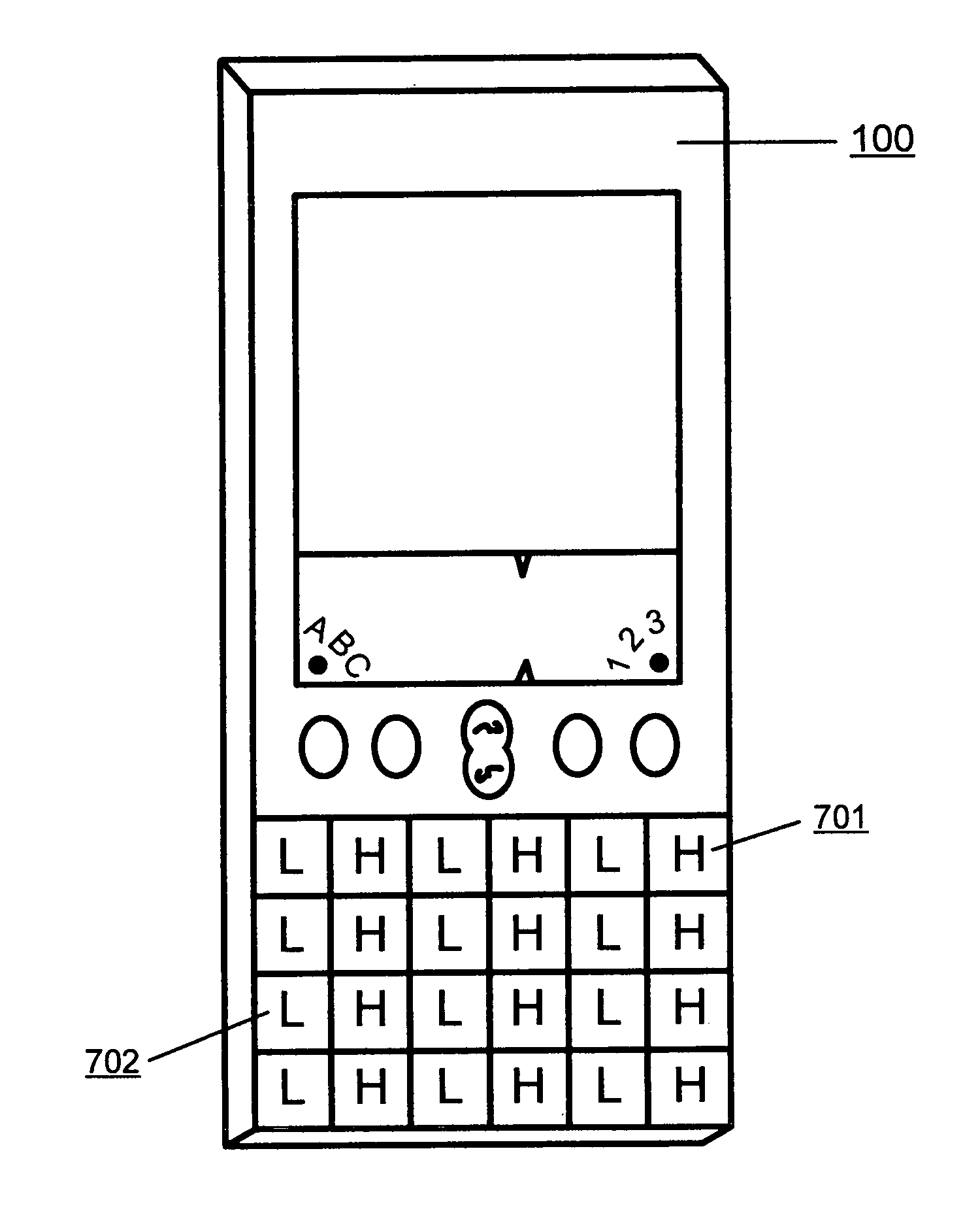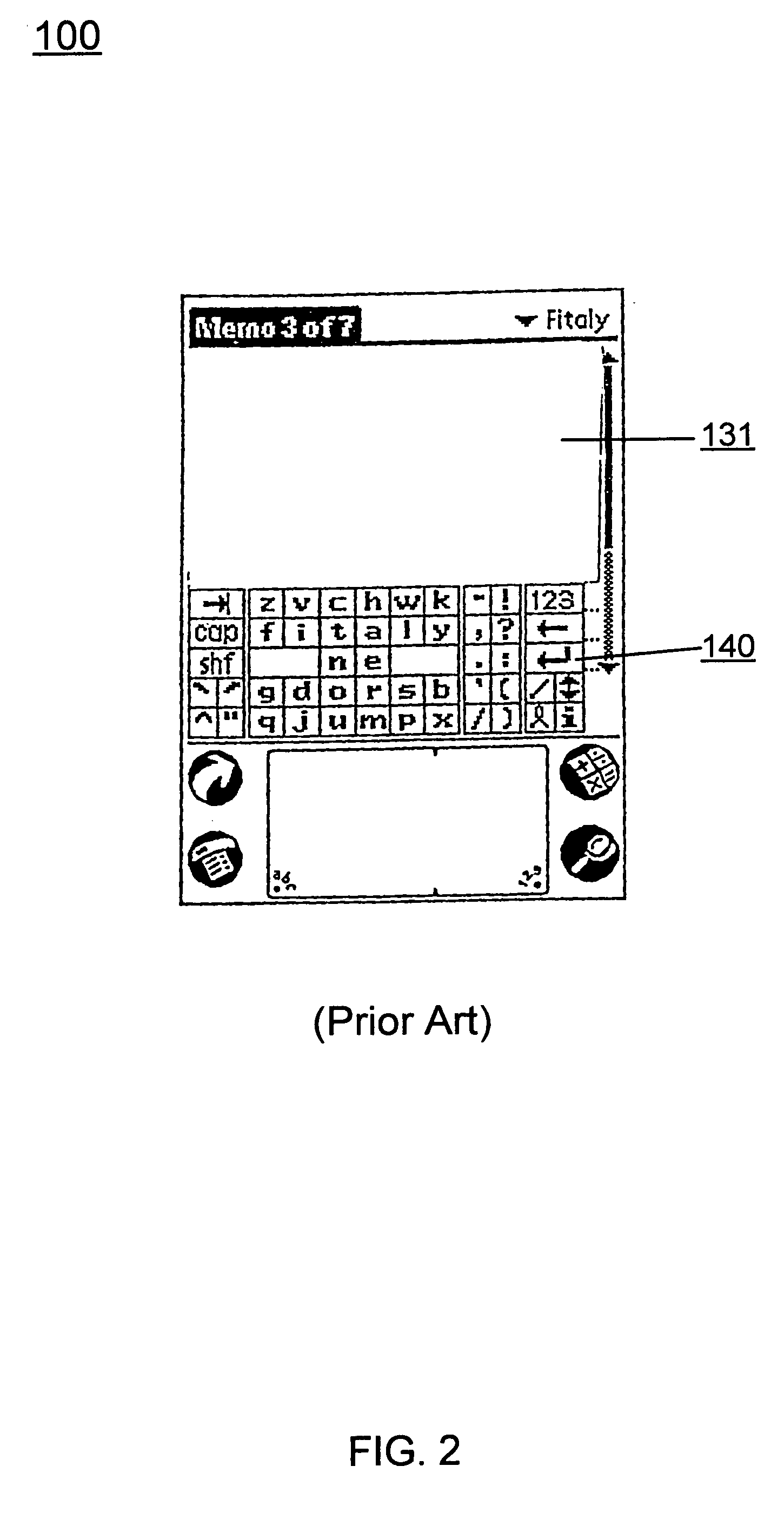Raised keys on a miniature keyboard
a miniature keyboard and raised key technology, applied in the field of data input devices of the keypad, can solve the problems of inability the inability of the handwriting recognition device to work, and the inability of the potential user to understand the operation of the handwriting recognition device, so as to facilitate the improvement of key differentiation and data input, improve navigation, data entry, and reduce the chance of depressing multiple keys at a tim
- Summary
- Abstract
- Description
- Claims
- Application Information
AI Technical Summary
Benefits of technology
Problems solved by technology
Method used
Image
Examples
embodiment 1100
[0047]FIG. 11 is another embodiment 1100 of the miniature keyboard of the present invention. In this embodiment, the keys are staggered with the key height alternated across diagonal columns. High keys 701 and low keys 702 are alternated across each row resulting in diagonal rows of equal height that slope to the left of the keyboard. By staggering the columns of keys and by alternating the height of the columns of keys, improved key differentiation is achieved.
embodiment 1200
[0048]FIG. 12 is another embodiment 1200 of the miniature keyboard of the present invention. This embodiment is similar to FIG. 11 wherein the keys are staggered with key height alternated across the columns of keys. High keys 701 and low keys 702 are alternated across the rows resulting in diagonal columns of keys sloping to the left that are the same height. Similar to FIG. 11, by staggering the keys and by alternating the height of the diagonal columns of keys, key differentiation the accuracy of data input are greatly improved.
[0049]FIG. 13 is another embodiment 1300 of the miniature keyboard of the present invention. In this embodiment, the keys are staggered and the height of keys is alternated down the rows of keys with the middle row being differentiated in height from the other rows. The rows of keys are alternated between high keys 701 and low keys 702. The combination of staggering the keys and alternating the height of the rows of keys creates a keyboard with improved ke...
PUM
 Login to View More
Login to View More Abstract
Description
Claims
Application Information
 Login to View More
Login to View More - R&D
- Intellectual Property
- Life Sciences
- Materials
- Tech Scout
- Unparalleled Data Quality
- Higher Quality Content
- 60% Fewer Hallucinations
Browse by: Latest US Patents, China's latest patents, Technical Efficacy Thesaurus, Application Domain, Technology Topic, Popular Technical Reports.
© 2025 PatSnap. All rights reserved.Legal|Privacy policy|Modern Slavery Act Transparency Statement|Sitemap|About US| Contact US: help@patsnap.com



